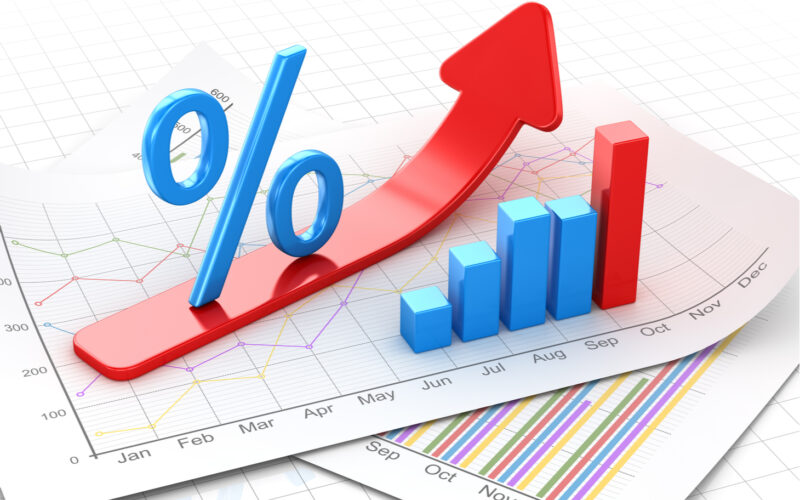[Today’s Fortune & Freedom comes from The Fleet Street Letter Wealth Builder and its editor Charlie Morris, a former £3 billion fund manager at HSBC. He recently began warning about instability in the place I consider to be the greatest risk of causing another global financial crisis. I asked to republish his work, which comes in two parts. Today, let’s check out Part 1.]
The very name of this publication – The Fleet Street Letter Wealth Builder – says a lot about how we see the world.
As the words The Fleet Street Letter recognise, you – our readers – live in a sterling world. Accordingly, we always give thought as to what assets are likely to deliver the best outcomes for you, here in the UK, in sterling terms.
The words Wealth Builder suggest that we normally give priority to equities in our Whisky and Soda portfolios. This is because equities – investment in companies’ shares – tend to do most to boost wealth over the long term.
However, this edition of The Fleet Street Letter Wealth Builder – and the one that will follow it on 22 February – are rather unusual. Both editions are devoted to the bond markets of the euro area – and to euro area government bonds in particular.
Make no mistake, though. These are really enormous and important markets. Currently, euro area governments have borrowed about €10 trillion (or, if you prefer, €10,000 billion) through bond markets. Non-government bonds (issued mainly by financial institutions) in the euro area account for around the same amount.
To put it bluntly, if things go wrong in the colossal markets for government bonds in the euro area, the problems will definitely have a global impact.
So, what are the potential problems?
The very safe asset that has lost 41% of its value in a year
There are two ways in which you can describe the market for a particular bond.
One way is to look at the yield. This is the return which you will get from holding the bond to maturity. The return will depend on: the price that you pay today; regular interest payments (sometimes called the coupons) that you will receive; and the amount (the face value of the bond) that will be paid to you when it matures.
The other way is to look at the price of the bond. Because the regular interest payments and the face value of the bond are fixed, the price is the element which changes as the yield alters.
If, for instance, investors start worrying a lot about inflation, they will likely demand a higher yield on the bond. If the yield goes up, the price goes down – and vice versa.
To see how all this works in practice, consider what has happened to the 100-year bond which was issued by the Republic of Austria (i.e. that country’s government) in 2017.
Austria’s government has a very good credit rating – meaning that there is minimal likelihood of it not paying the regular coupons or (at maturity) the face value of the bond.
In 2017, yields on long-term euro area government bonds were very low. Austria’s government wanted to take advantage of this. The coupon payments are just 2.1% per year.
By issuing a bond that doesn’t mature until 2117, the government further reduced the overall risk of its balance sheet.
From the point of view of Austria’s government, issuing the bond was a very smart move.
From the point of view of investors, buying and/or holding the bond was also a very smart move – but only up to the last quarter of 2020.
Essentially, a bond that was issued in mid-2017 at a price of €100 rose to a peak price of €230 in late 2020. Since that time – or over about 13 months – the price has dropped to €136 today [at the time of writing]. Anyone who invested at the peak now faces a paper loss of 41%.
Bond market analysts often talk about a bond’s duration. This is the sensitivity of the price of the bond to a given change in market yields.
Because this Austrian bond has a 100-year maturity and a coupon of only 2.1%, it has a very long duration. Even if market yields go up slightly, the impact on the price will be huge.
Over the last year, expected inflation in the euro area has jumped from roughly 0% to 5.1%.
As inflation expectations have gone up, so have market yields – and the impact has been dramatic for holders of the Austrian government’s 100-year bond.
The key take-aways from all this are as follows:
- Government bond yields in the euro area are still at very low levels relative to their history. If investors continue to look for inflation of 5.1% or higher, the yields will almost certainly rise further.
- For long duration bonds – like the Republic of Austria 2.1% 2117 bond discussed above – this will be very bad news.
- Some euro area government bonds will not be so badly affected if they have coupons that are high or which are adjusted in response to inflation (as is the case for index-linked bonds here in the UK or Treasury Inflation-Protected Securities – TIPS in the United States).
- If inflation of 5-10% is expected to persist for years, many euro area government bonds will be seen as deeply unattractive.
- If conditions in fixed income markets go bad, a bond that is “safe” in that it carries a very high credit rating can still be a disastrous investment. If, at some stage in the reasonably near future, yields on very long-dated bonds rise to 5%, the price of Austria’s 2117 bond will fall towards €20.
In other words, inflation represents a major challenge for investors in many euro area government (and, indeed, non-government) bonds. However, it is not the only one – as I will explain tomorrow.

Charlie Morris
Editor, Southbank Investment Research
PS Note from the publisher: Another major challenge to investors right now is, of course, knowing how best to deal with the chaos in the energy markets, where the price of oil has gone ballistic.
James Allen, understands the energy market very well, having spent a number of years at a leading energy bureau in Manhattan before returning to London to launch a service entirely dedicated to investing in what he sees as the future of energy.
Starting today, he’s hosting a first-of-its-kind free event to detail where he believes the biggest opportunities in energy – and the markets as a whole – will be found over the coming months and years.
He’s also invited six leading experts to join him, so if you’re interested in the future of the energy market and how to take financial advantage, you should certainly consider attending.



